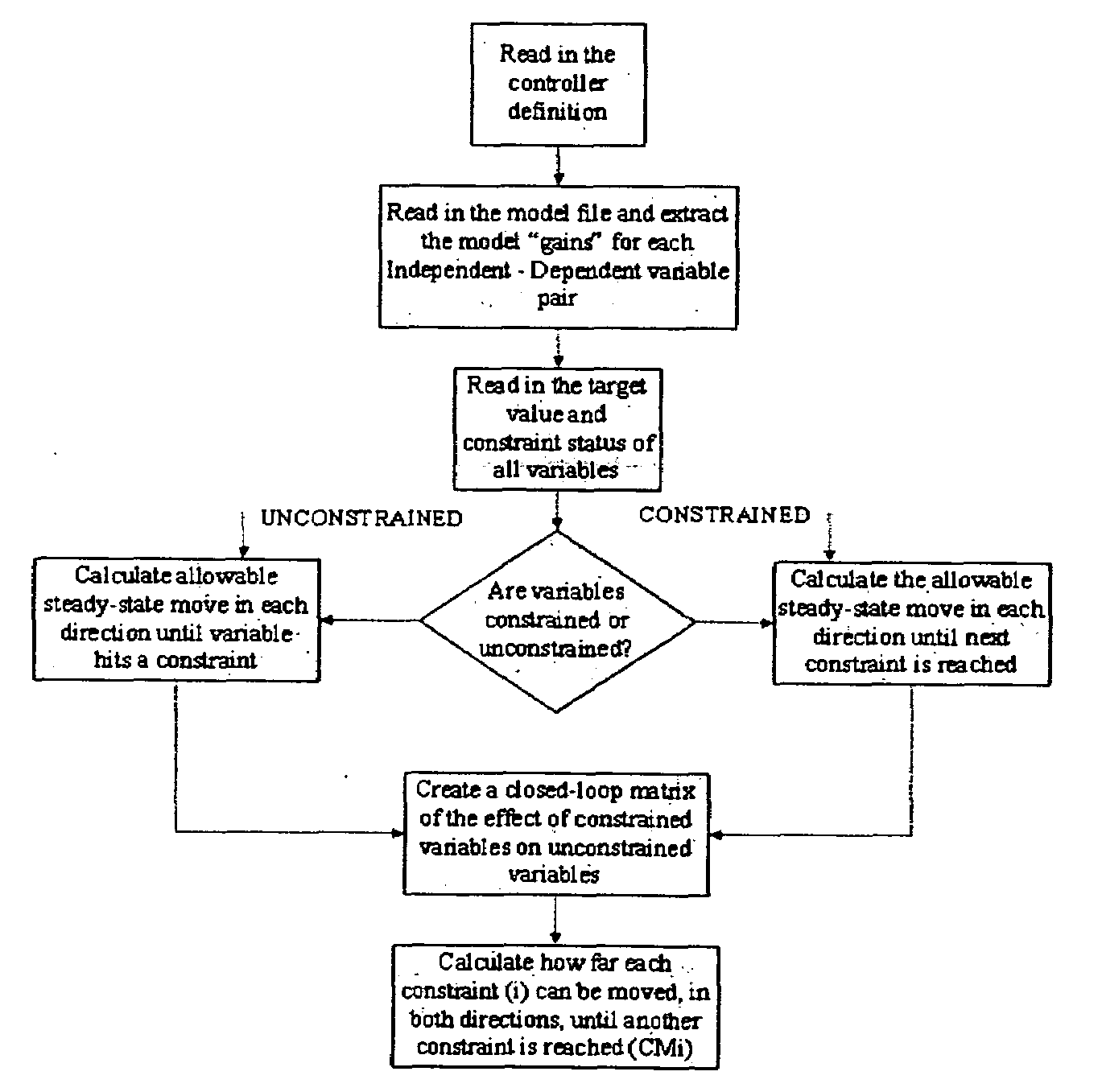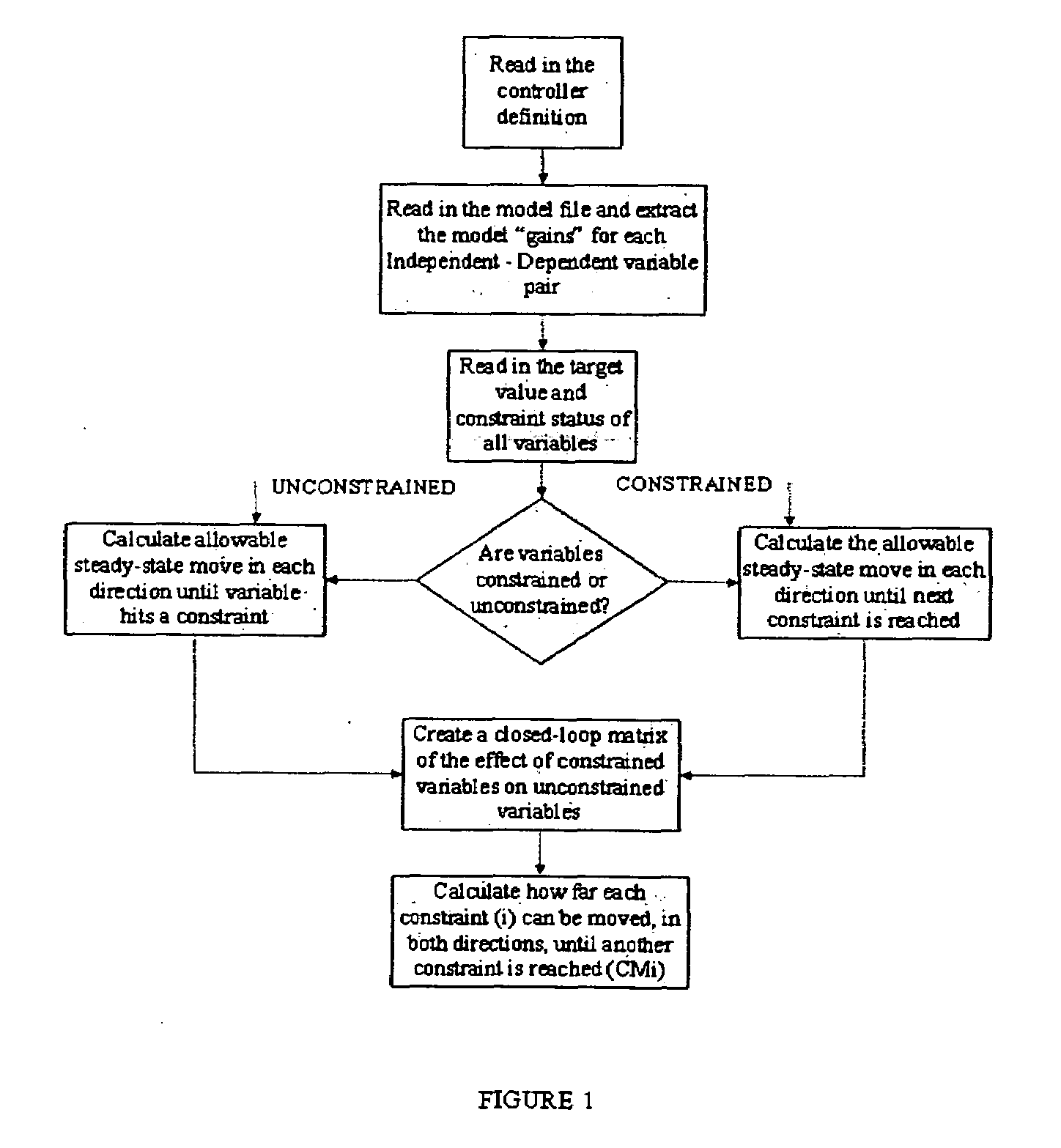Model predictive controller solution analysis process
a controller and model technology, applied in the field of control systems, can solve problems such as inability to know how much to change a constraint, require offline simulation, and take a significant amount of time to understand
- Summary
- Abstract
- Description
- Claims
- Application Information
AI Technical Summary
Benefits of technology
Problems solved by technology
Method used
Image
Examples
Embodiment Construction
[0017]A preferred embodiment of this invention described herein is directed to a dynamic matrix controller (DMC). However, the invention is intended to apply more broadly to multivariable predictive controllers (MPC) in general and to control schemes in which it is desirable to optimize process limits in various applications.
[0018]The term operator used herein is intended to refer to any end user. For example, an end user could be an operator, a process engineer, a shift lead, a control engineer, or a manager.
[0019]To demonstrate the basic functionality of the invention, a simple problem is addressed. In the simplest form, a constraint sensitivity analysis tool for a DMC controller is provided with no transforms, no ramps, and no minimum move MVs. The basic functions include a constrained variable analysis, which determines how much a constraint can be moved before the next constraint becomes active, and identifies the next constraint. An unconstrained variable analysis is also acco...
PUM
 Login to View More
Login to View More Abstract
Description
Claims
Application Information
 Login to View More
Login to View More - R&D
- Intellectual Property
- Life Sciences
- Materials
- Tech Scout
- Unparalleled Data Quality
- Higher Quality Content
- 60% Fewer Hallucinations
Browse by: Latest US Patents, China's latest patents, Technical Efficacy Thesaurus, Application Domain, Technology Topic, Popular Technical Reports.
© 2025 PatSnap. All rights reserved.Legal|Privacy policy|Modern Slavery Act Transparency Statement|Sitemap|About US| Contact US: help@patsnap.com



